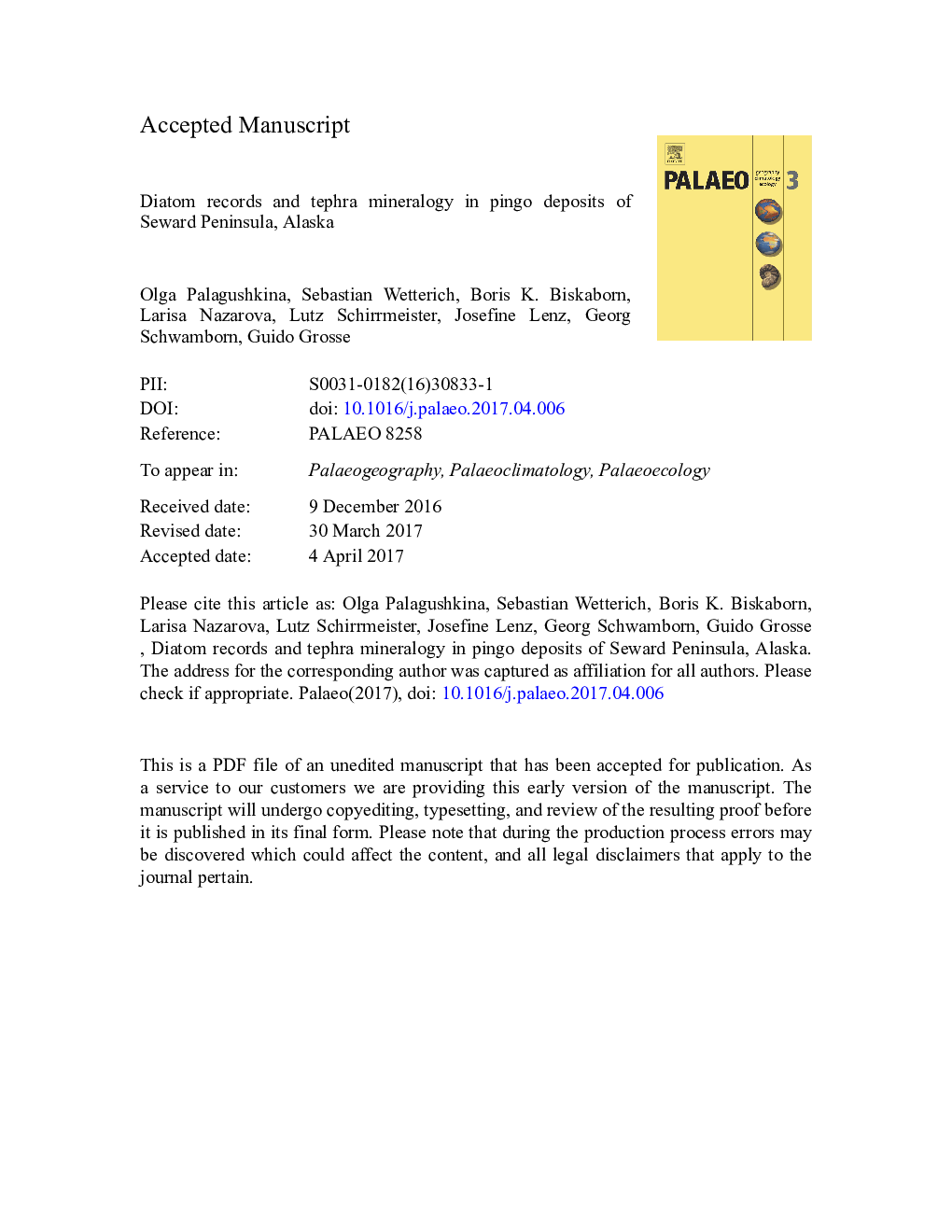| Article ID | Journal | Published Year | Pages | File Type |
|---|---|---|---|---|
| 5755840 | Palaeogeography, Palaeoclimatology, Palaeoecology | 2017 | 51 Pages |
Abstract
Vast areas of the terrestrial Subarctic and Arctic are underlain by permafrost. Landscape evolution is therefore largely controlled by climate-driven periglacial processes. The response of the frozen ground to late Quaternary warm and cold stages is preserved in permafrost sequences, and deducible by multi-proxy palaeoenvironmental approaches. Here, we analyse radiocarbon-dated mid-Wisconsin Interstadial and Holocene lacustrine deposits preserved in the Kit-1 pingo permafrost sequence combined with water and surface sediment samples from nine modern water bodies on Seward Peninsula (NW Alaska) to reconstruct thermokarst dynamics and determine major abiotic factors that controlled the aquatic ecosystem variability. Our methods comprise taxonomical diatom analyses as well as Detrended Correspondence Analysis (DCA) and Redundancy Analysis (RDA). Our results show, that the fossil diatom record reflects thermokarst lake succession since about 42Â 14CÂ kyr BP. Different thermokarst lake stages during the mid-Wisconsin Interstadial, the late Wisconsin and the early Holocene are mirrored by changes in diatom abundance, diversity, and ecology. We interpret the taxonomical changes in the fossil diatom assemblages in combination with both modern diatom data from surrounding ponds and existing micropalaeontological, sedimentological and mineralogical data from the pingo sequence. A diatom-based quantitative reconstruction of lake water ÑÐ indicates changing lake environments during mid-Wisconsin to early Holocene stages. Mineralogical analyses indicate presence of tephra fallout and its impact on fossil diatom communities. Our comparison of modern and fossil diatom communities shows the highest floristic similarity of modern polygon ponds to the corresponding initial (shallow water) development stages of thermokarst lakes. We conclude, that mid-Wisconsin thermokarst processes in the study area could establish during relatively warm interstadial climate conditions accompanied by increased precipitation due to approaching coasts, while still high continentality and hence high seasonal temperature gradients led to warm summers in the central part of Beringia.
Related Topics
Physical Sciences and Engineering
Earth and Planetary Sciences
Earth-Surface Processes
Authors
Olga Palagushkina, Sebastian Wetterich, Boris K. Biskaborn, Larisa Nazarova, Lutz Schirrmeister, Josefine Lenz, Georg Schwamborn, Guido Grosse,
